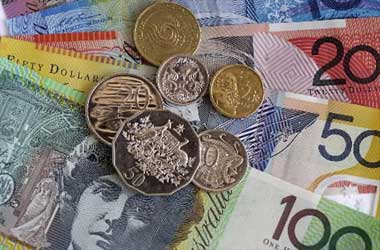 On Wednesday, the Australian dollar fell to about 0.726 versus the US dollar, a level not seen since early October, as the latest wage growth figures simply met market expectations, frustrating traders who had been counting on robust results opposed to central bank estimates. Australian salaries increased by 2.2 percent year on year in the third quarter, matching expert estimates but falling short of the rate that policymakers feel would merit an increase in interest rates.
On Wednesday, the Australian dollar fell to about 0.726 versus the US dollar, a level not seen since early October, as the latest wage growth figures simply met market expectations, frustrating traders who had been counting on robust results opposed to central bank estimates. Australian salaries increased by 2.2 percent year on year in the third quarter, matching expert estimates but falling short of the rate that policymakers feel would merit an increase in interest rates.
The Reserve Bank of Australia restated in the minutes of its most recent policy meeting that it is willing to be patient until wage and inflation objectives are fulfilled, and that a rate rise in 2024 remains the key case. In his inflation talk on Tuesday, RBA governor Philip Lowe also said that current data and estimates do not necessitate a hike in the cash rate in 2022.
Australia’s seasonally adjusted wage price index increased by 2.2 percent year on year in Q3 2021, after a 1.7 percent rise in Q2. This was the highest reading since Q1 2020, as business conditions improved after the COVID-19 epidemic. Wages in the private sector grew (2.4 percent vs. 1.9 percent in Q2), continuing the trend of rise that began with the series low in Q3 2020.
Meanwhile, the public sector’s growth rate has remained lower than the private sector’s, with this being the first increase in the annual rate since Q1 2020. (1.7 percent vs 1.3 percent). Annual pay increase in original terms varied from 1.2 percent for the utilities industry to 3.4 percent for professional, scientific, and technical services across sectors. Tasmania had the greatest annual salary growth rate (2.7 percent) among states and territories, while South Australia had the lowest (1.8 percent). On a quarterly basis, the wage price index increased 0.6 percent in Q3, up from 0.4 percent in Q2 and above the expectation of 0.5 percent.
During its November meeting, the Reserve Bank of Australia abolished the 0.1 percent yield goal on the April 2024 government bond and dropped its previous prediction that rates would not increase until 2024. Simultaneously, officials maintained the cash rate at a record low of 0.1 percent for the 12th month in a row, while continuing to purchase government bonds at a rate of A$4 billion per week until at least mid-February 2022.
The RBA said that the decision to discontinue the yield objective reflects economic strengthening and faster-than-expected progress toward the inflation goal. “The board is willing to be patient, with the central projection calling for underlying inflation to be no higher than 21/2 percent by the end of 2023 and wage growth to be modest.”
Since last week, when statistics indicated core inflation had surged into the RBA’s 2-3 percent target zone, the RBA has been under pressure to shift direction. Meanwhile, Governor Philip Lowe said that the most recent data and predictions did not support a rate hike in 2022.



